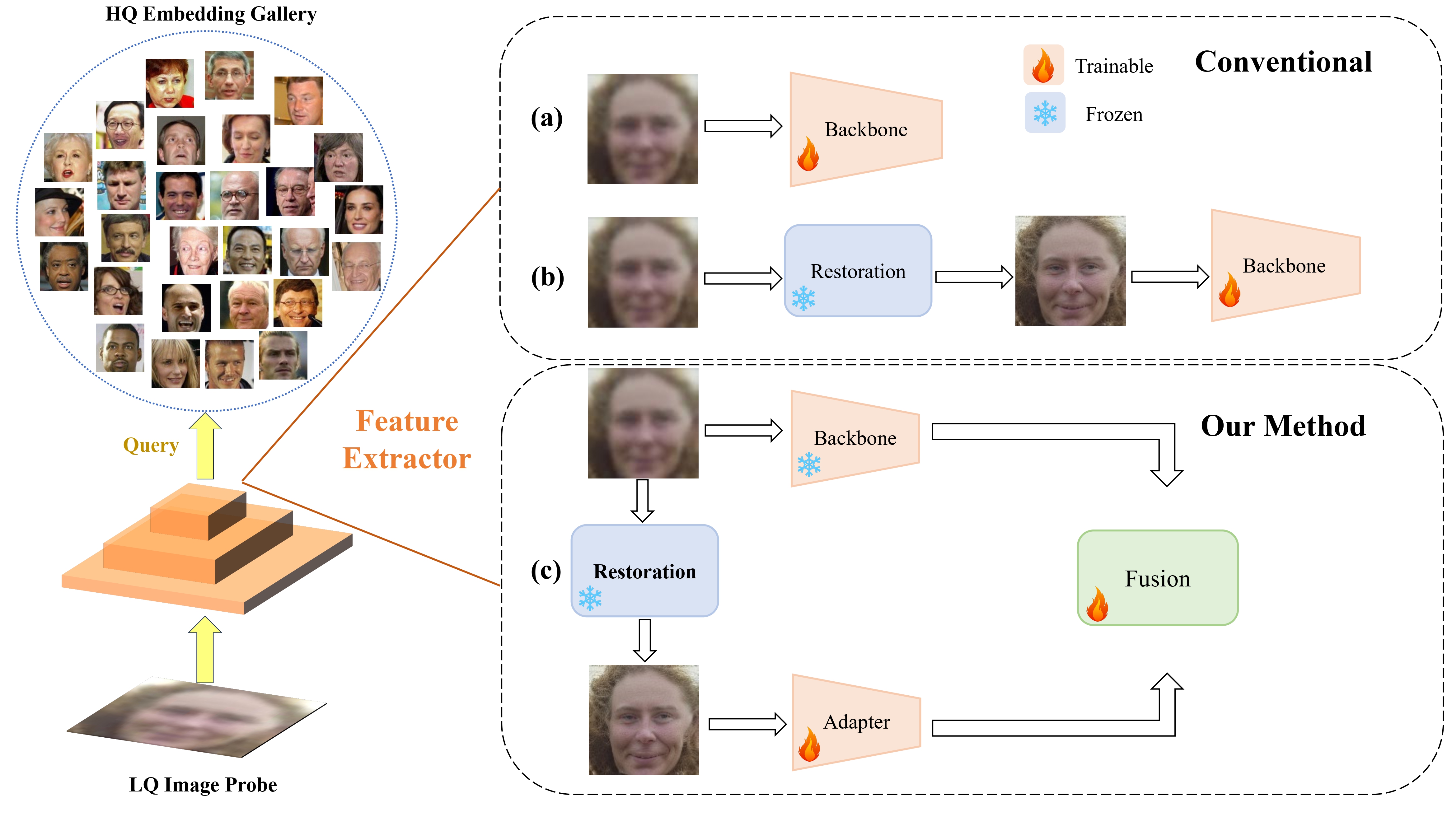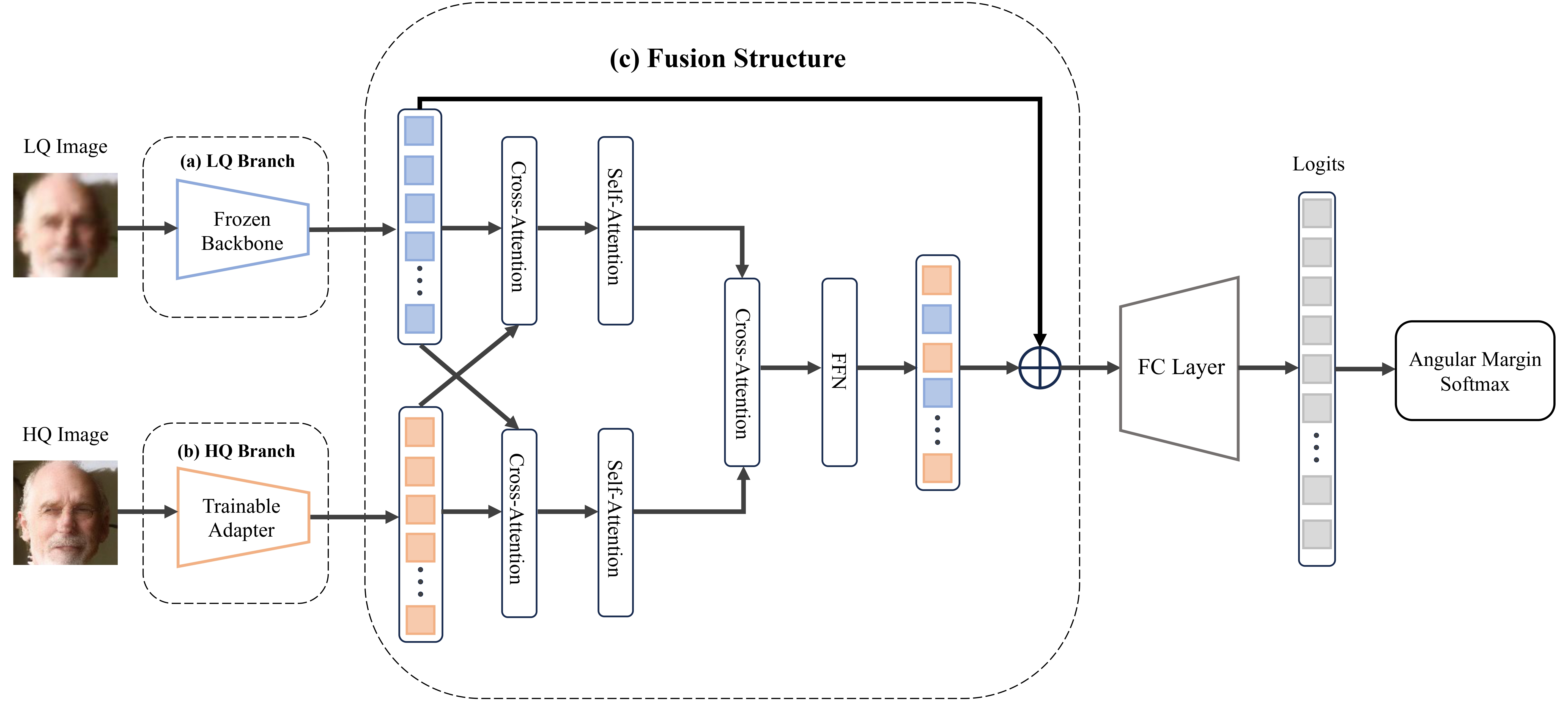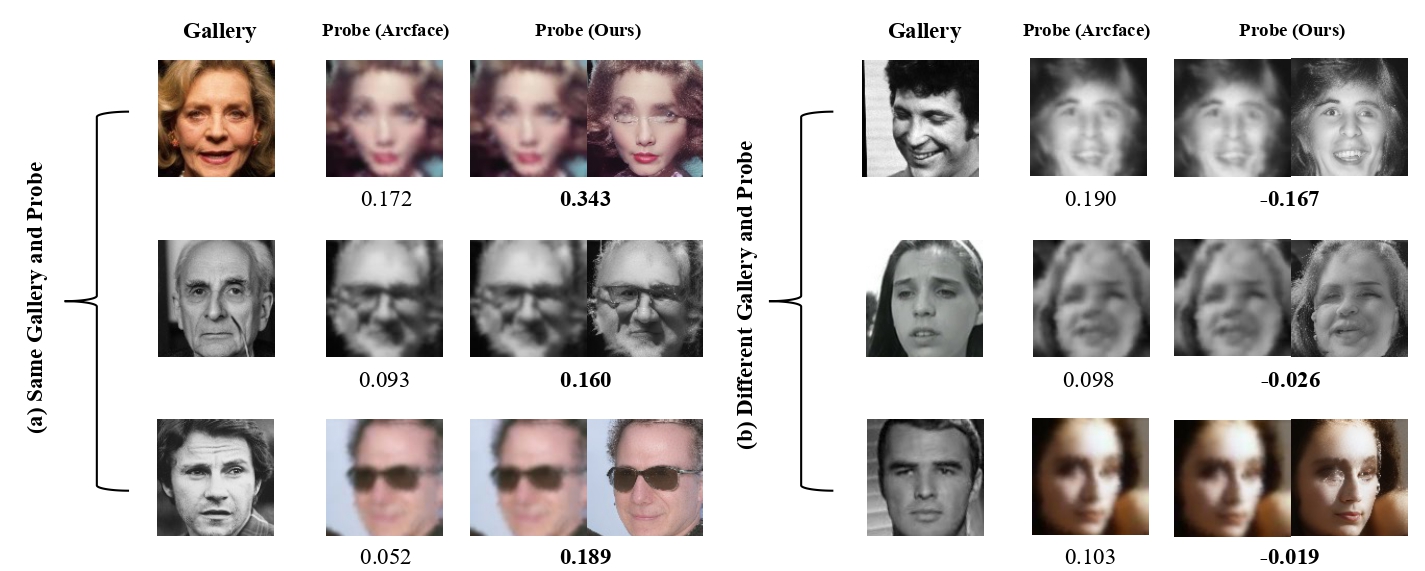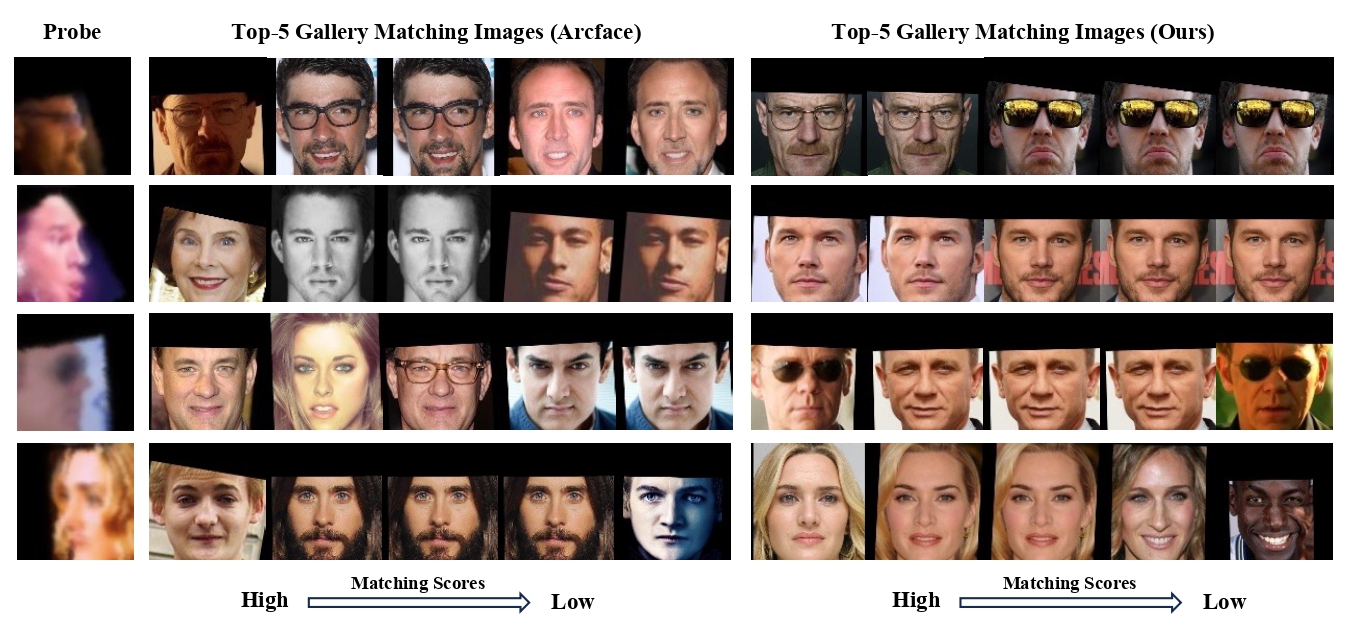In this paper, we tackle the challenge of face recognition in the wild, where images often suffer from low quality and real-world distortions. Traditional heuristic approaches—either training models directly on these degraded images or their enhanced counterparts using face restoration techniques—have proven ineffective, primarily due to the degradation of facial features and the discrepancy in image domains. To overcome these issues, we propose an effective adapter for augmenting existing face recognition models trained on high-quality facial datasets. The key of our adapter is to process both the unrefined and the enhanced images by two similar structures where one is fixed and the other trainable. Such design can confer two benefits. First, the dual-input system minimizes the domain gap while providing varied perspectives for the face recognition model, where the enhanced image can be regarded as a complex non-linear transformation of the original one by the restoration model. Second, both two similar structures can be initialized by the pre-trained models without dropping the past knowledge. The extensive experiments in zero-shot settings show the effectiveness of our method by surpassing baselines of about 3%, 4%, and 7% in three datasets. Our code will be publicly available at https://github.com/liuyunhaozz/FaceAdapter/.



